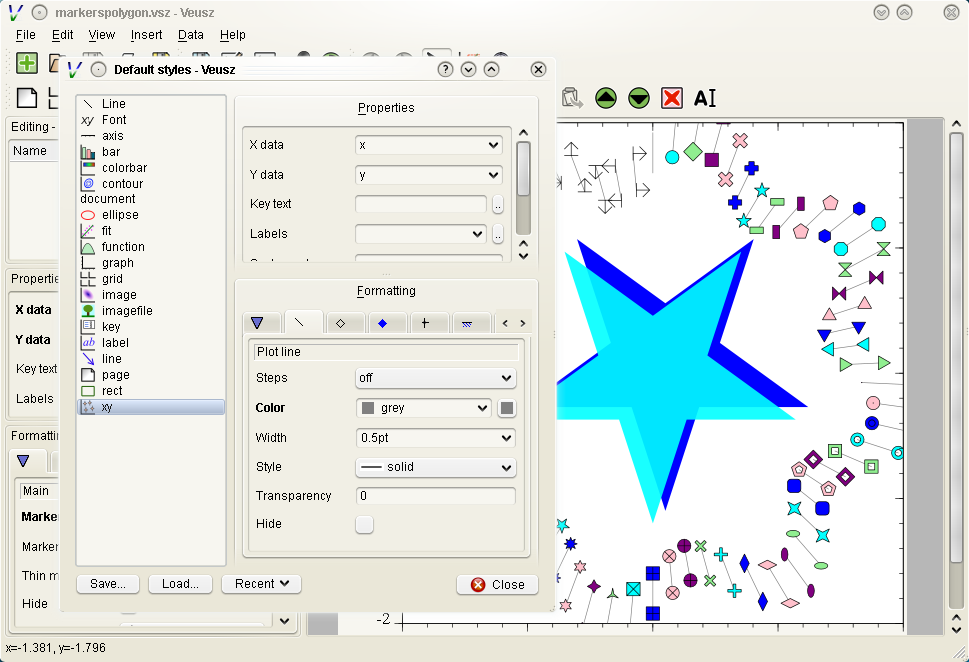

If the fitting parameters vary significantly from 1, then it is worth "normalizing" them by adding in a factor in the fit equation to bring them to of the order of 1. In addition Veusz does not supply estimates for the errors or the final chi-squared in a machine readable way. Note that more work is required in this widget, as if a parameter is not well defined by the data, the matrix inversion in the fit will fail. If there is none, Veusz assumes the same fractional error everywhere, or symmetrises asymmetric errors. In order to fit properly, the y data (or x, if fitting as a function of x) must have a properly defined, preferably symmetric error. It then fits the data (note that at the moment, the fit plotter fits all the data, not just the data that can be seen on the graph) by minimising the chi-squared. a*x**2 + b*x + c, and initial values for the variables (here a, b and c). The fitter takes a function to fit containing the unknowns, e.g. This is achived by clicking on a "fit" button, or using the "fit" action of the widget. This plotter is a like the function plotter, but allows fitting of the function to data. The xy plotter can plot a label next to each dataset, which is either the same for each point or taken from a text dataset.If you wish to leave gaps in a plot, the input value "nan" can be specified in the numeric dataset. The settings for the xy widget are the various attibutes for the points, line and error bars, the datasets to plot, and the axes to plot on.

An xy plotter can also plot a stepped line, allowing histograms to be plotted (note that it doesn't yet do the binning of the data). This versatile plotter takes an x and y dataset, and plots (optional) points, in a chosen marker and colour, connecting them with (optional) lines, and plotting (optional) error bars. xyĪ plotter which plots scatter, line, or stepped plots. Filling is supported above/below/left/right of the function. As well as the function setting, also settable is the line type to plot the function, and the number of steps to evaluate the function when plotting. Technically, Veusz imports the numpy package when evaluating, so numpy functions are available. A number of functions are available (e.g. Functions can be functions of x or y (parametric functions are not done yet!), and are defined in Python expression syntax, which is very close to most other languages. Here is a list: functionĪ plotter which plots a function on the graph.


 0 kommentar(er)
0 kommentar(er)
